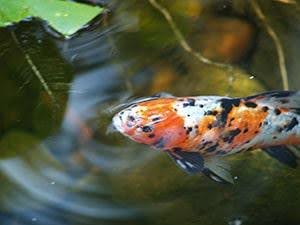If you’re a koi enthusiast, you know that caring for these beautiful fish involves more than simply admiring their graceful movements. Winter can be a challenging season for koi, especially if you live in a region with freezing temperatures. To ensure your koi remain safe and healthy throughout the colder months, taking time to winterize their pond properly is essential. This guide will walk you through effective winter preparation steps to keep your koi safe and thriving even as temperatures drop.
Why Winterizing Your Koi Pond Matters
Koi are hardy fish but require specific conditions to survive in cold weather. When temperatures dip, koi slow down, becoming less active and entering a semi-hibernative state called torpor. During this period, their metabolism decreases, and they become more vulnerable to poor water quality and sudden temperature shifts. Winterizing your pond can help keep the water stable, reduce stress on your koi, and prevent common winter-related issues like ice blockages and low oxygen levels.
Step 1: Clean the Pond Thoroughly
Before winter arrives, thoroughly clean your koi pond. Remove any debris, leaves, and algae from the water, as decaying plant material can produce harmful gases that could harm your koi over winter. Here’s how:
- Skim Leaves and Debris: Use a pond net to skim out leaves and any floating debris.
- Trim Surrounding Plants: Prune plants and remove any that overhang the pond to prevent leaves from falling in.
- Vacuum the Pond Bottom: Invest in a pond vacuum to clean the pond bottom effectively. This step helps prevent sludge buildup, which can release toxins into the water as it decomposes.
A clean pond will improve water quality, reduce the need for water changes, and keep your koi safe.
Step 2: Invest in a Pond Heater or De-Icer
In freezing temperatures, pond water can develop a layer of ice on the surface, trapping harmful gases beneath and preventing oxygen from entering. To avoid this:
- Use a Pond Heater: A pond heater keeps a small area of the water from freezing, allowing gas exchange to continue. Pond heaters come in various sizes and power options, so choose one suited for your pond’s volume.
- Consider a De-Icer: A de-icer floats on the water’s surface, preventing ice formation in a specific area. It’s an affordable and effective solution for ponds in regions with mild to moderate winter temperatures.
If you’re unsure whether a pond heater or de-icer is suitable for your setup, consult with your local koi supplier.
Step 3: Reduce Feeding as Temperatures Drop
As water temperatures decrease, your koi’s metabolism slows, meaning they require less food to sustain their energy levels. Feeding koi when their digestive systems are slow can lead to health issues.
- Monitor Water Temperature: Once the water temperature falls below 50°F (10°C), stop feeding your koi entirely.
- Switch to Wheat Germ-Based Food: If temperatures are still above 50°F, feed a wheat germ-based food, which is easier for koi to digest.
Overfeeding in winter can cause leftover food to decay, leading to poor water quality. Monitor temperature regularly and adjust feeding accordingly to keep your koi healthy during the colder months.
Step 4: Maintain Proper Water Quality
Water quality is crucial year-round, but especially in winter when filtration and aeration can be limited.
- Use a Test Kit: Check ammonia, nitrite, pH, and nitrate levels regularly. Ensure they stay within healthy ranges.
- Reduce Water Changes: In winter, koi produce less waste, so frequent water changes are unnecessary. However, occasional changes can help maintain balance, especially if ammonia or nitrite levels rise.
- Monitor Oxygen Levels: Ensure your pond’s oxygen levels are adequate by maintaining aeration. If your pond pump has an aerator attachment, keep it running to circulate oxygenated water throughout the pond.
Keeping an eye on water quality ensures your koi remain in an environment that supports their health and reduces stress.
Step 5: Add Aeration with a Pond Pump or Air Stone
Aeration is essential, especially if you’re not using a heater or de-icer. Oxygen levels can decrease when water cools, making it harder for koi to breathe comfortably.
- Install an Air Pump or Air Stone: Place these near the pond’s surface to provide gentle aeration. Be sure not to place them too deep, as they may disturb koi at rest.
- Keep the Pump Running: Let the air pump run consistently to keep oxygen flowing. If you experience frequent power outages, consider a backup generator to keep the aerator and other essential equipment operational.
Proper aeration is one of the simplest ways to prevent fish stress and keep the water oxygenated throughout winter.
Step 6: Cover the Pond with a Net or Pond Cover
A pond net or cover serves multiple purposes during winter. It helps keep debris out, maintains warmer water temperatures, and can even reduce ice formation.
- Install a Pond Net: A mesh netting over the pond prevents leaves and other debris from falling in, which reduces the need for cleaning.
- Use a Pond Cover: Consider a durable pond cover designed to insulate water. These covers can raise water temperature by a few degrees, reducing the risk of freezing.
Keeping your koi pond covered also minimizes the likelihood of predators targeting koi, who tend to become sluggish and more vulnerable in cold weather.
Step 7: Reduce Water Movement
In winter, koi seek out stable areas in the pond with minimal water movement to conserve energy.
- Adjust Waterfalls and Filters: If your pond has a waterfall or a high-powered filter, consider reducing their flow or turning them off for the season. Excessive water movement can disturb koi and make it difficult for them to rest.
- Reposition Pumps: If you have multiple pumps, reposition them closer to the surface rather than the pond’s bottom, where koi will likely gather.
Lowering water movement helps your koi remain in a low-energy state, preserving their health and well-being throughout winter.
Conclusion
Keeping your koi safe during winter requires careful planning, but the benefits are worth it. By cleaning the pond, using a heater or de-icer, adjusting feeding habits, and managing water quality, you can create a winter-safe environment for your koi to thrive in. Monitoring their behavior and making necessary adjustments as winter progresses will ensure they remain healthy and ready for a vibrant return to activity in the spring.
With the right preparation, you’ll enjoy watching your koi flourish, knowing that you’ve taken every step to keep them safe and comfortable during the colder months.
FAQs
1. Can koi survive in a frozen pond?
Koi can survive in ponds with ice on the surface as long as there’s an opening for gas exchange. A pond heater or de-icer can help maintain this opening, ensuring harmful gases don’t build up beneath the ice.
2. When should I stop feeding my koi in the winter?
When water temperatures drop below 50°F (10°C), it’s best to stop feeding your koi. Their digestive systems slow significantly at this temperature, and they no longer require as much food.
3. How can I keep the pond oxygenated in winter?
Using an air pump, air stone, or aerator can maintain oxygen levels in your pond, preventing the water from becoming stagnant and keeping koi healthy.
4. Is it necessary to cover the koi pond during winter?
While not essential, covering the pond with a net or cover can help keep debris out, reduce ice formation, and maintain slightly warmer temperatures.
5. Should I turn off my pond pump in winter?
In most cases, reducing water movement by adjusting the pump’s flow or turning it off can help koi rest comfortably. If you choose to keep the pump running, position it closer to the surface rather than the pond’s bottom.
Winterizing your koi pond can ensure a safe and stable environment for your fish during colder months. A well-prepared pond means healthier, happier koi who will greet you with renewed energy come spring.
Stay in touch to get more updates & news on Vital-Mag-Net!

